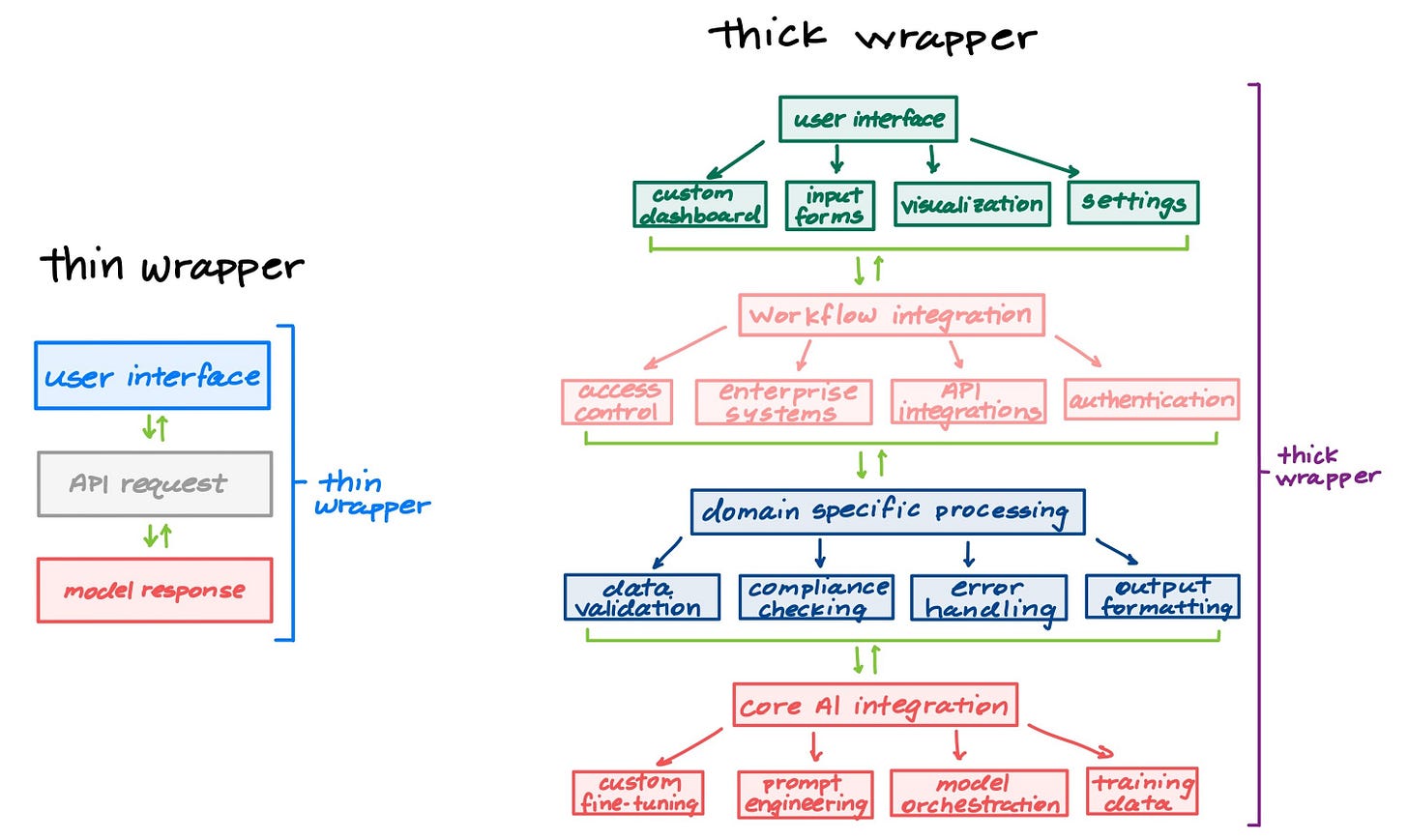AI Hype Cycles: The Rise, Fall, and Evolution of AI Products
A history lesson for building sustainable AI-powered businesses
Since OpenAI released ChatGPT in November of 2022, we've witnessed an unprecedented transformation in the AI product landscape. What once felt like magic – a simple chat window that could understand and respond to natural language – has evolved into something far more complex and nuanced.
The democratization of AI has been remarkable. What was previously confined to research labs and elite engineering teams suddenly became accessible to anyone with a browser. This accessibility triggered a gold rush of product development and investment that would reshape the technology industry.
Like any new technology (think: iPhone), the immediate use cases weren’t entirely clear. It was obvious however that there was an immediate demand for AI at every layer of the stack. From developer tools to SaaS products, all the way to consumer edge devices, AI was going to be a crucial differentiator moving forward.
The Early Days: When Everything Was Possible
In those first few months after ChatGPT's release, the possibilities seemed endless. Like the early days of the iPhone or cloud computing, the immediate use cases weren't entirely clear – but the potential was obvious. AI was poised to become a crucial differentiator at every layer of the technology stack.
The first wave of products were what we now call "wrappers" – simple interfaces built around AI APIs. Among the most prominent examples was PDF.ai, which raised $8M in seed funding to build what was essentially a document chat interface. They weren't alone – dozens of similar companies received funding for nearly identical products.
The formula was simple:
Take an existing AI model
Add a basic interface
Raise venture capital
The Rise and Fall of Wrapper Products
By mid-2023, the limitations of this approach became apparent. Take Quillbot AI, for example – a company that raised millions for an AI writing assistant. Their product was useful, but when OpenAI and Google released similar features natively in their platforms, the company struggled to maintain its growth trajectory.
This pattern repeated across the industry. Companies that had built businesses around feature gaps in ChatGPT found themselves in a precarious position. PDF analysis tools, in particular, faced an existential crisis when OpenAI added native PDF processing to ChatGPT Plus.
The lesson was clear: building a company around a feature that could be easily replicated by platform providers was not a sustainable strategy.
The Evolution: From Thin to Thick Wrappers
As the market matured, successful companies evolved beyond simple wrappers. Harvey AI in the legal sector provides an instructive example. Rather than just providing a chat interface to legal documents, they:
Built deep integration with existing legal workflows
Developed domain-specific training data
Created proprietary fine-tuning techniques
Established partnerships with major law firms
This approach – what we might call a "thick wrapper" – proved more sustainable. The product wasn't just an interface to AI; it was a complete solution to a well-defined problem.
The emphasis now was on providing vertical-specific solutions that had deep integration with industry-specific workflows and data, rather than just adding a chat interface. Markets like legal tech, healthcare, and financial services became key targets since a successful solution would require a high degree of domain expertise, complex enterprise integration, and navigating substantial compliance requirements–making for a highly defensible moat.
The Hardware Stumble: A Cautionary Tale
Perhaps no story better illustrates the challenges of AI product development than Humane's AI Pin. Launched with tremendous fanfare and $240M in funding, the product promised to revolutionize how we interact with AI in daily life.
The reality fell short of the hype:
Poor response times
Limited practical functionality
High price point ($699 + $24/month subscription)
Dependence on cloud processing
Similar issues plagued the Rabbit R1, another heavily hyped AI hardware product. Despite clever marketing and an attractive $199 price point, early reviews suggested it was essentially a wrapper for existing AI services, packaged in hardware form.
The Coding Assistant Bubble
The story of AI coding assistants perfectly illustrates the broader AI hype cycle. When Cognition Labs released their demo of Devin, an "AI software engineer," it generated massive excitement. The demo showed the AI writing complete applications from scratch.
However, real-world testing revealed significant limitations:
Only worked well on simple, well-defined tasks
Struggled with complex system design
Required extensive human oversight
Couldn't maintain larger codebases
This doesn't mean AI coding assistants are worthless – GitHub's Copilot and the Cursor IDE have found success by focusing on augmenting developers rather than replacing them. Regardless, their helpfulness varies widely depending on the specificity and complexity of the given task. The key difference? They promised less but delivered more consistent value.
Looking Forward: The Path to Sustainable AI Products
Like previous tech cycles – cryptocurrency, virtual reality, blockchain – we're still in the early stages of understanding how AI can create genuine value. The initial decoupling of quality and success, where products could succeed simply by capturing attention, is ending.
Successful AI products of the future will likely share several characteristics:
Deep domain expertise
Proprietary data and training techniques
Complex system integrations
Clear return on investment
Defensible competitive advantages
The era of quick AI wrappers may be over, but we're just beginning to understand how to build sustainable AI-powered businesses. The failures and lessons of the past two years have given us a clearer roadmap for the future.
The best part? The real innovation is just getting started.








